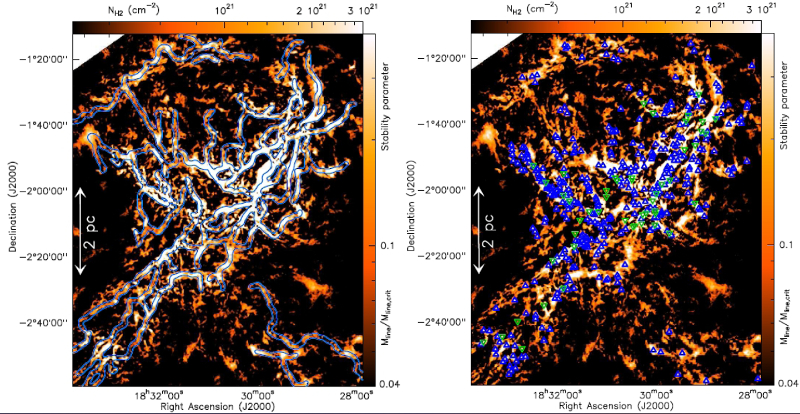| EPoS Contribution |
|
A census and properties of dense cores and filaments in the Aquila and Orion B cloud complexes
Vera Koenyves CEA, Gif-sur-Yvette, FR | |
|
One of the main scientific goals of the
Herschel Gould Belt survey
is to elucidate the physical
mechanisms responsible for the formation and evolution of prestellar
cores in molecular clouds. Based on Herschel/SPIRE-PACS photometric
data, we have recently identified a large sample of such cores in the
Aquila and Orion B molecular clouds.
Our Herschel observations also provide an unprecedented census of filaments in the nearby clouds and suggest an intimate connection between these filaments and the formation process of prestellar cores. We will compare and contrast some properties of the dense cores in the Aquila and Orion B complexes, such as their distributions in the filamentary background, masses, lifetimes, and formation thresholds. In summary, our Herschel findings support a filamentary paradigm for the early stages of star formation, where the cores result primarily from the gravitational fragmentation of marginally supercritical filaments. | |
 | |
| Caption: Curvelet component of a portion of the Herschel H_2 column density map in Aquila, which is also equivalent to a map of the mass per unit length along the filaments (Andre et al. 2010). Left: The typical ~0.1 pc width of the filaments (Arzoumanian et al. 2011) is marked by the blue contours and the unstable filaments are highlighted in white. Right: In the same map, prestellar cores (blue triangles) and protostellar cores (green triangles) are overlaid (Könyves et al. 2015). | |
| Collaborators: Ph. Andre, CEA, FR and the Herschel Gould Belt consortium |
Key publication
Suggested Session: From Low- to High-Mass Star Formation |

